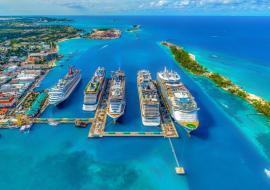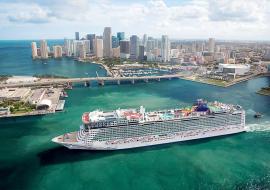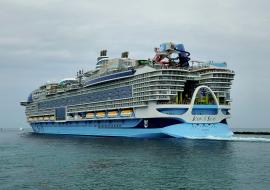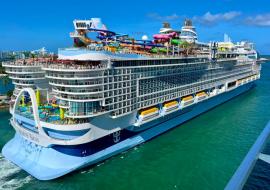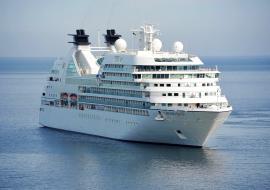Costa Gets Two Next-Generation Cruise Ships
Carnival Corp.’s Italian brand, Costa Cruises, will get two new next-generation cruise ships that will accommodate up to 6,600 passengers and operate on cleaner-burning fuel.
The ship order is part of Carnival’s agreement with shipbuilder Meyer Werft to build four cruise ships that will have the largest guest capacity in the world to date. The other two ships are going to Carnival’s German brand, AIDA Cruises. Both orders are part of Carnival’s massive order for nine cruise ships from Meyer Werft and Italy’s Fincantieri shipyard for delivery from 2019 to 2022.
The new Costa ships will be built at the Meyer shipyard in Turku, Finland, with deliveries expected in 2019 and 2020. Each ship will exceed 180,000 gross tons with capacities greater than on Royal Caribbean International’s Oasis-class ships, which measure 225,282 gross tons but accommodate up to 6,410 guests total. Carnival said that is possible due to a new design that will make “more efficient use of the ship’s spaces, which includes multi-functional common areas and plans for more personal space.”
These four new ships for Costa and AIDA will be the first in the industry to use liquefied natural gas (LNG), which Carnival says is the cleanest-burning fossil fuel. These ships will use LNG to generate 100 percent of the ship’s power both in port and on the open sea, which is an industry-first innovation that will significantly reduce exhaust emissions.
“These new ships will be phenomenal additions to our fleet, and we’re looking forward to seeing our Costa and AIDA brands bring this ground-breaking new ship design to life for our guests in a way that is customized for each brand,” said Carnival CEO Arnold Donald. “Above all, these strategic investments are designed to exceed the vacation needs of our guests, but it is also important to note that these next-generation ships are an important part of our measured growth strategy, which includes replacing less-efficient ships with newer, larger and more-efficient vessels over a very specific period of time.”
Source: Travel Pulse







